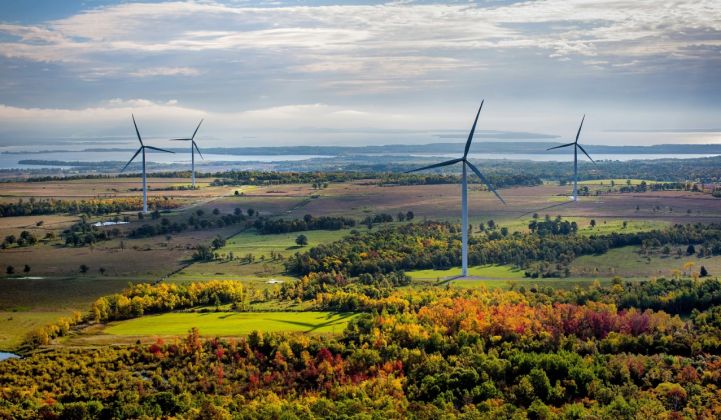General Electric has made supplying clean-energy equipment a central pillar of its future business, but in the meantime the company's Capital division continues to shed renewables investments under new CEO Larry Culp.
On Tuesday, asset manager Harbert Management Corp. announced the acquisition of an 80 percent stake in an 812-megawatt portfolio of U.S. onshore wind farms from a joint venture of GE and Enel Green Power. The deal reflects GE’s ongoing efforts to shrink its Capital arm as it restructures under Culp.
Enel Green Power, among the world’s foremost renewables developers, and GE, one of the top wind turbine suppliers, formed the joint venture known as EGPNA Renewable Energy Partners in 2015 — with GE increasing its stake to an even 50 percent the following year. At the time, the JV was positioned as a rival investment model to the renewable energy yieldcos then making waves in the market.
But signs have emerged this year that GE wanted to get out of the joint venture, as the company retrenches around a few core business pillars — including renewables manufacturing and services — and the broader U.S. wind market repositions ahead of the phase-down of its federal tax credit.
GE Capital owns its stake in the renewables joint venture through its Energy Financial Services unit, which typically invests in energy projects with an eye to encouraging the sale of GE equipment. Italy’s Enel owns its stake through its U.S.-based subsidiary, Enel Green Power North America.
Harbert Management, which claims $6.7 billion of assets under management, is buying the projects through its Gulf Pacific Power unit. The division owns a range of North American generation assets, including a stake in the 550-megawatt Desert Sunlight solar plant in California.
Harbert’s new wind portfolio spans five projects in Oklahoma, Minnesota and the Canadian province of Newfoundland. Enel Green Power North America will retain a 20 percent stake in the portfolio and will operate the projects for Alabama-based Harbert. GE has sold its entire stake.
Financial terms of the deal were not disclosed.
For GE, it’s a good time for such an exit: Demand for operating renewables projects with offtake deals is strong from a range of institutional investors, including pension and infrastructure funds. Harbert's Gulf Pacific Power, for one, counts the California Public Employees’ Retirement System among its investors.
Earlier this year, Enel Green Power bought out GE’s stake in seven wind, solar and geothermal assets. And a little more than a year ago, Apollo Global Management acquired a $1 billion portfolio of projects from GE Energy Financial Services — encompassing renewables, gas-fired plants, and midstream energy infrastructure assets.
Enel Green Power was the fourth-largest developer of new wind capacity in the U.S. last year, trailing only perennial leader NextEra, Invenergy and EGP’s long-time partner Tradewind Energy, according to the American Wind Energy Association. In March, Enel acquired Tradewind amid ongoing consolidation in the U.S. wind market.
Meanwhile, GE led the U.S. wind turbine market through the first three quarters of 2019, competing closely with Vestas and Siemens Gamesa.
While the American industrial giant lags far behind rivals MHI Vestas and Siemens Gamesa in the fast-growing global offshore wind market, GE has gained substantial momentum recently on the back of its 12-megawatt Haliade X turbine — including a blockbuster 1.2-gigawatt order from Ørsted for two projects in the U.S.




